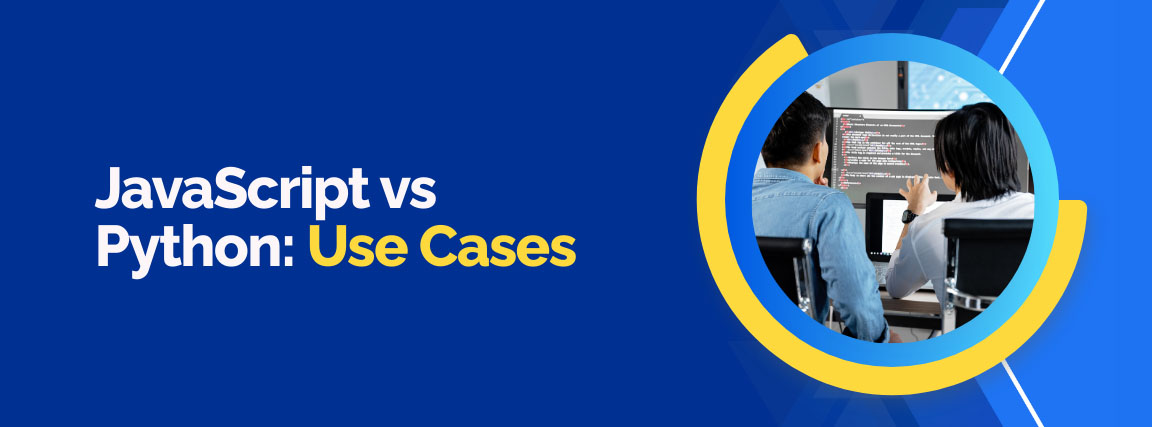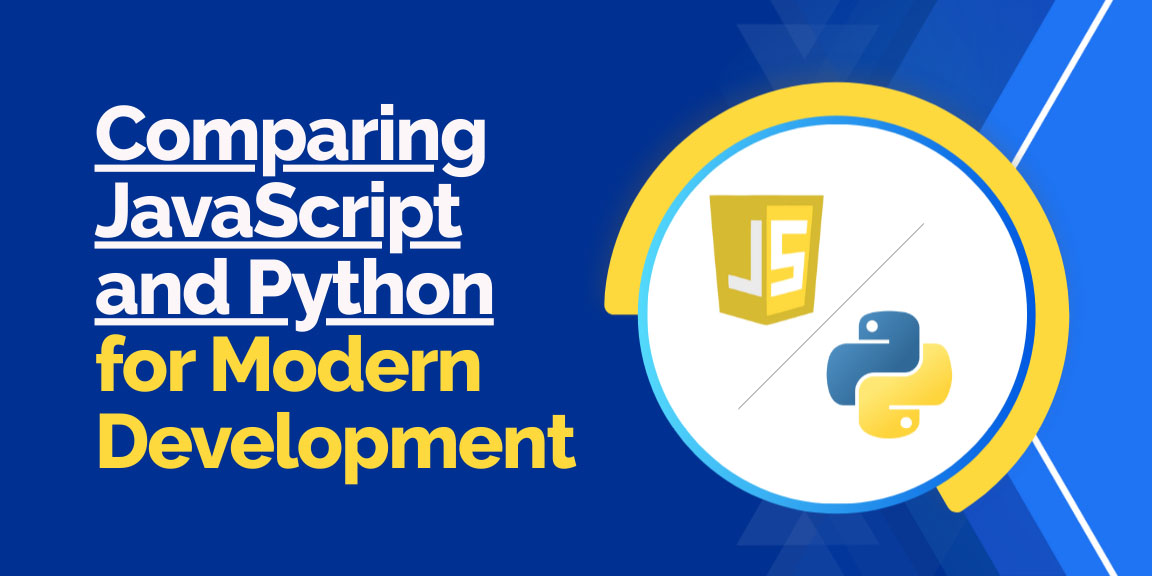Software Development, zBlog
JavaScript vs Python: Use Cases, Benefits, and Challenges in Modern Development
Team Trantor | Updated: August 22, 2025
In 2026, the decision between JavaScript vs Python continues to define how innovative, scalable, and intelligent modern software solutions become. Both languages have matured into industry powerhouses—each excelling in distinct arenas, powering everything from browser-based applications to advanced AI and machine learning solutions. As businesses accelerate digital transformation, understanding the strengths, trade-offs, and the latest industry trends in JavaScript vs Python is more critical than ever.
This comprehensive guide explores the core use cases, notable benefits, and real-world challenges of JavaScript vs Python. We’ve analyzed the latest US search results, referenced leading B2B and technology sources, and infused Trantor’s unique, human-centric perspective. The result: a future-oriented, SEO-optimized resource that arms CTOs, architects, and developers with actionable insights for strategic technology choices.
What Is JavaScript?

JavaScript is a high-level, object-oriented scripting language—and the backbone of the web. Initially designed to add interactivity to web pages, it is now a full-stack powerhouse, extending from front-end to server-side with the help of Node.js, and reaching into mobile, IoT, and even AI applications. JavaScript is the only language understood natively by all major browsers, making it essential for building seamless, cross-device user experiences.
Modern JavaScript (ES6+ and beyond) boasts powerful new syntax, modularization, and robust tooling. Front-end frameworks like React, Angular, Svelte, Next.js, and Vue, plus high-performance engines like V8, keep JavaScript at the center of interactive web and application development.
What Is Python?

Python is a versatile, high-level, general-purpose programming language prized for its clarity, simplicity, and tremendous ecosystem. Its syntax reads like English, lowering the entry barrier for beginners and supercharging productivity for experts. From powering AI breakthroughs with TensorFlow and PyTorch, to orchestrating large-scale web services with Django and Flask, Python spans domains including:
- Artificial Intelligence
- Data Science
- Automation and Scripting
- Backend Web APIs
- Scientific Research
- Finance
- Education
Python’s readability, extensive libraries, and built-in support for best practices make it the top choice for rapid development and prototyping.
JavaScript vs Python: Use Cases

JavaScript Use Cases
- Front-End Web Development: JavaScript (with frameworks like React, Angular, and Vue) is indispensable for dynamic web pages, Single Page Applications (SPAs), and Progressive Web Apps (PWAs).
- Backend & Real-Time Apps: Node.js and Deno enable scalable server-side APIs, microservices, and real-time needs like chat apps or notifications.
- Mobile App Development: JavaScript-based frameworks (React Native, Ionic) allow for cross-platform mobile apps using a single codebase.
- Desktop Applications: Electron and NW.js facilitate desktop apps (e.g., Slack, Visual Studio Code) using familiar JavaScript.
- IoT & Edge Computing: Lightweight JavaScript engines run on IoT devices, edge servers, and microcontrollers.
- Interactive Media & Gaming: JavaScript powers browser games, 3D graphics (with WebGL, Three.js), and VR/AR web content.
Python Use Cases
- AI & Machine Learning: Python’s vast libraries (TensorFlow, PyTorch, scikit-learn) dominate all tiers of ML, deep learning, computer vision, and NLP.
- Data Science & Analytics: Numpy, Pandas, and Matplotlib lead for ETL, analytics, and visualization.
- Process Automation & Scripting: Python scripts efficiently automate workflows, data processing, and DevOps.
- Backend Development: Django, Flask, and FastAPI power scalable APIs, admin dashboards, CMS, and more for major web platforms.
- Scientific Computing: Python is foundational in academia, scientific simulations, bioinformatics, and quantitative finance.
- Testing, QA & DevOps: Frameworks like Pytest, Selenium, and Robot Framework accelerate test automation and CI/CD.
Combined Use Cases
Most mature digital products use both: JavaScript for the real-time, user-facing interface and Python for machine learning, analytics, and heavy backend logic—communicating via RESTful or GraphQL APIs for optimal performance and modularity.
JavaScript vs Python: Core Benefits

JavaScript Benefits
- Universal Web Presence: JavaScript is essential for any serious front-end development, thanks to native browser support.
- Full Stack Potential: Node.js and frameworks like Next.js/Nuxt.js enable seamless logic from client to server with a shared language.
- Performance for Real-Time Apps: Event-driven architecture, async/await features, and efficient engines (like V8) excel at responsive web and I/O-heavy apps.
- Massive Ecosystem: npm delivers millions of libraries and robust tooling for nearly every imaginable use case.
- Cross-Platform Reach: With React Native and Electron, JavaScript is a “write once, deploy everywhere” solution across web, mobile, and desktop.
- Continuous Evolution: New standards (ES6+), TypeScript support, and AI tool integration keep JavaScript future-ready.
Python Benefits
- Readable & Maintainable Code: Python’s clean syntax slashes development time, reduces errors, and supports smooth onboarding.
- AI, Data Science & ML Dominance: Python leads in machine learning, AI research, and data analysis with unmatched library support and community strength.
- Rapid Automation: Its scripting ability is unrivaled for automating tasks, pipeline orchestration, and data engineering.
- Diverse Ecosystem: From web APIs to scientific computing, finance, and education, Python’s libraries power every domain.
- Strong Community & Documentation: Open source, inclusive, and beginner-friendly, Python continues to thrive worldwide.
- Prototyping & Quick Iteration: Startups and innovation labs leverage Python’s speed for quick proof-of-concept and MVP development.
Challenges in JavaScript vs Python

JavaScript Challenges
- Async Complexity: Callback hell and async patterns require discipline and experience to manage efficiently.
- Ecosystem Fragmentation: Framework overload—React, Angular, Vue, Svelte, Qwik, and more—can overwhelm teams.
- Type Safety: By default, JavaScript is dynamically typed, leading to runtime bugs in large codebases. TypeScript helps, but adoption requires extra learning.
- Security & Package Risks: With so many npm packages, security vulnerabilities and supply chain attacks need active management.
- Rapid Standard Changes: Keeping up with the pace of ECMAScript releases means continuous upskilling.
Python Challenges
- Web & Mobile Limitations: Python is not natively supported in browsers and is rarely used for client-side scripting or mobile UI development.
- Performance Constraints: Being interpreted, Python can be slower than compiled languages or V8-powered JavaScript for I/O-heavy or real-time tasks.
- Concurrency Bottleneck: The Global Interpreter Lock (GIL) limits true parallel CPU-bound processing without special handling.
- Deployment Overhead: Managing dependencies and environment (via pip, virtualenv, containers) for large deployments can be complex.
JavaScript vs Python: Trends and Innovations in 2026

AI-Driven Development Tools
Both JavaScript and Python now benefit from integrated AI coding assistants (e.g., GitHub Copilot, Cursor, Tabnine, Figma AI). These tools recommend code snippets, auto-complete functions, catch errors early, and even generate unit tests.
Edge and Serverless Expansion
- JavaScript dominates serverless and edge functions, with platforms like Vercel, Cloudflare Workers, and AWS Lambda supporting instant, globally distributed code execution.
- Python is increasingly supported for serverless (AWS Lambda, GCP Cloud Functions) and often triggers AI workflows at the edge.
Type-Safe, Modular Code
- TypeScript is now the default for most large-scale JavaScript projects, offering static typing and safer refactoring.
- Python’s type hints and new static analysis tools (mypy, Pyright) improve maintainability and robustness for large teams.
Progressive Web & App Experiences
- JavaScript is at the core of Progressive Web Apps (PWAs) and SPA/SSR evolution, while Python teams focus backend energy on supporting instant, real-time APIs and AI inference services for these front ends.
Interoperability with WebAssembly
- Emerging tools like Pyodide and Transcrypt allow Python code to run securely in browsers via WebAssembly, while JavaScript interoperates with high-performance, compiled logic for games, simulations, and ML.
Industry-Specific Frameworks
- B2B and enterprise teams leverage mature frameworks like Django REST coupled with React or Vue, uniting both worlds for modular, robust solutions.
Best Practices: Picking Between JavaScript and Python
- For web-first applications, real-time UIs, or single-page apps: Go with JavaScript (React, Vue, Angular) for maximum compatibility and performance.
- For AI/ML, data science, or heavy backend automation: Leverage Python’s robust libraries and ecosystem.
- For cross-platform B2B solutions: Combine both—JavaScript for front end, Python for business logic, analytics, or AI integration.
- For rapid MVPs and innovation sprints: Python speeds prototyping, while JavaScript’s “universal” presence can be deployed instantly in browsers, desktop, or mobile.
Real-World Examples by Trantor Inc.
- Retail Analytics Platform: React front end (JavaScript) with Python (Pandas, FastAPI) powering real-time reporting and forecasting.
- Healthcare SaaS: Angular single-page front end (JavaScript), Django backend (Python) with AI diagnostics and HIPAA-compliant automation.
- IoT Fleet Management: Node.js for event-driven data collection and device control; Python pipelines for large-scale analytics and machine learning.
Frequently Asked Questions
Which language is better for beginners in 2026?
Python usually wins for first-timers due to its readable syntax, but JavaScript frameworks have vastly improved learning resources and sandboxing for fast feedback.
Is JavaScript or Python better for data science?
Python remains the dominant choice given its ecosystem, libraries, and community in AI and analytics.
Can I use both JavaScript and Python in the same project?
Absolutely. Most successful B2B products do, joining a JavaScript front end to a Python-powered backend or AI service via APIs—a best practice for speed and modularity.
What about security in JavaScript vs Python?
Both ecosystems require vigilant dependency and package management. JavaScript’s npm supply chain is particularly large, so teams must leverage best-practice auditing and automated vulnerability scanning.
How about job market and developer demand?
Both skills remain hot in the job market. JavaScript is essential for modern web roles; Python leads in analytics, AI, automation, and backend roles.
Opportunities for Modern Businesses
Many online guides trend toward surface-level feature charts or speed tests. To truly stand out and unlock value, Trantor recommends:
- Embracing AI-powered workflows for faster prototyping, testing, and launching successful products.
- Leveraging infrastructure that enables both JavaScript and Python for hybrid, modular, composable solutions.
- Focusing on accessibility, Core Web Vitals, and compliance for stronger SEO and global reach.
- Designing architectures that allow rapid experimentation (Python) and seamless, immersive user experiences (JavaScript).
- Investing in developer velocity and automation to keep your teams productive and your software secure.
Conclusion
At Trantor Inc., our deep expertise in both JavaScript and Python helps organizations stay ahead of the technology curve. The reality of JavaScript vs Python is not about which is best universally—but what’s best aligned to your business goals, user experiences, and future vision.
By combining the strengths of JavaScript for dynamic, cross-platform interfaces with Python’s AI and automation muscle, we architect modern, resilient, and intelligent solutions for enterprises worldwide.





